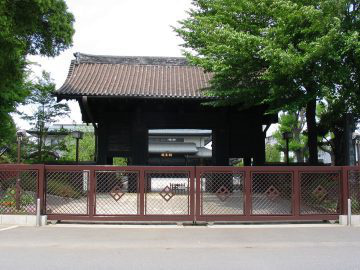
01. Front Gate of Honbo in Kan-eiji(Kanei-ji) Temple
Important Cultural Properties
14, Ueno park Rinno-den hall
During the Edo Period, various buildings of Kan-eiji Temple were arranged in order where today Ueno Park is now located. Konpon Chudo, the main structure in which the principal image of Buddha was situated, existed about where the fountain now exists. Behind the fountain, where Tokyo National Museum stands today, was Honbo, the place for the head bonze to live in.
Honbo of Kan-eiji Temple was a grand and magnificent construction. The building, however, was lost in the fire of May 1868, which was caused by the war of Shogitai, and only the front gate of Honbo escaped destruction and this is the gate that survived.
It had been used as the main entrance for the Tokyo National Museum since the museum was opened in 1878, but at the time of the museum's reconstruction, which was after the Great Kanto Earthquake of 1923, this gate was moved to its present location.

02. Ryodaishi(Two Saints)
14, Ueno park Rinno-den hall
The Ryōdaishi was first built in 1644 to commemorate two saintly monks who were called the high priests Ryōgen in the 10th century and Tenkai in the early 17th century (Tenkai opened the Kan-eiji Temple in his time). The statues of these two Saints are enshrined here, and thus the name, Ryōdaishi (that means two saints) was given. These two Saints performed many meritorious deeds throughout their lifetimes and after their deaths, the Imperial Court awarded them a single title 'Daishi' and observed the many contributions to the development of Japanese Buddhism.
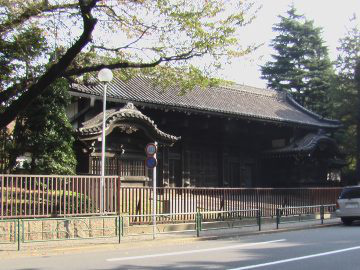
03. Front Gate of Former Insyu-Ikeda Yashiki
Important Cultural Properties
Tokyo National Museum, 13-9, Ueno park
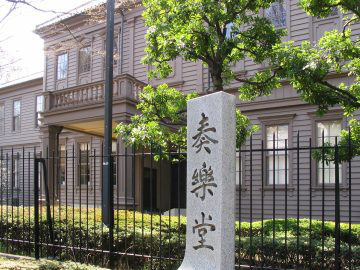
04. Symphony Hall of The Old Tokyo Music School (Sogakudo of the Former Tokyo Music School)
Important Cultural Properties
8-43, Ueno park
This structure was constructed as the main building of the Tokyo Music school (present Tokyo University of the Arts) in 1890. The designers were Yamaguchi Hanroku and Kuru Masamichi, and it was the first full-scale music hall. Therefore, it is a kind of monument for music education in this country.
From this symphony hall, many musicians including Taki Ren-taro emerged. However, superannuation of the building went on, and it was in danger of being demolished. Due to the endeavors of those concerned with music and other people, however, it was relocated to this place in March 1987 with its original appearance restored.
In coinciding with the relocation work, the only pneumatic-type pipe organ in Japan was repaired and resurrected in the center of the stage. It was designated as an important cultural asset of the nation in January 1988.
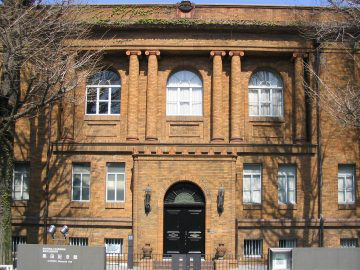
05. Kuroda Memorial Hall
Important Cultural Properties
13-9, Ueno park
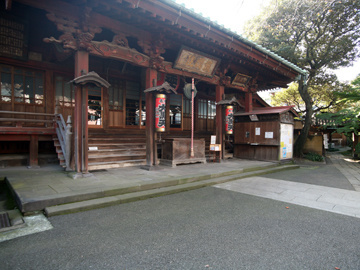
06. Gokoku-in Temple
Important Cultural Properties
Gokoku-in Temple, 10-18, Ueno park
Founded in 1630, Gokoku-in Temple is one of the affiliate temples under the auspices of Kan-eiji Temple.
Rebuilt in 1722, the existing main hall enshrines a figure of Shaka Nyorai (Sanskrit: Sakya Tathagata). The Daikokuten Painting is said to have been donated by the third shogun Tokugawa Iemitsu, and as one of the Yanaka Shichifuku Jin it is the object of religious devotion.
The first floor of the temple's living quarters was rebuilt in 1927. Due to the careful planning of Professor Okada Shinichiro of Tokyo School of Fine Arts (currently Tokyo University of the Arts) each innovation is laid out in order to achieve a certain functionality. Conveying trends in contemporaneous residential architecture of the time, the building was designated a Registered Tangible Cultural Property in 2001. While engaged in architectural design education at the Tokyo School of Fine Arts and Waseda University, Professor Okada also expressed his ideas and techniques of Japanese style architecture in his designs for the Kabukiza (1925) located in Ginza.
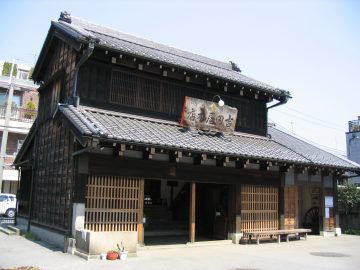
07. The Former Yoshidaya Liquor Shop Shitamachi Museum Annex
Taito City Tangible Cultural Property
2 chome 10-6, Ueno-sakuragi
Yoshidaya liquor shop was a sake store since Edo Period. It was donated to Taito City, then was reconstructed and restored in order to hand down the form of the liquor store of the early in the 20th century to future generations. It was originally built in 1910, partly reconstructed in 1935.
Its long eaves and wide entrance are characteristics of such merchant building, and the first floor was a counter and an office, the second floor was an employee's room. The warehouse was restored only on the outside based on a picture in 1910 and a Japanese-style room behind a counter was added for reinforcement of the building.
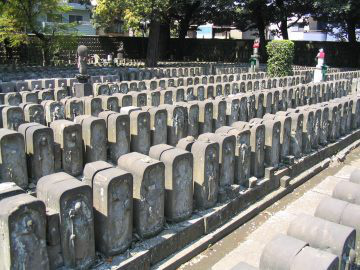
08. Eighty Four Thousand Images of Jizo (Guardian Deity of Children)
Jomyo-in Temple, 2 chome 6-4, Ueno-sakuragi
This temple was founded in 1666 and called Joen-in Temple. Its present name, Jomyo-in Temple was adopted in 1723. The front gate now standing built some time from 1716 to 1735.
A priest called Myoun, who became the chief priest of this temple in 1876, had faith in the guardian deity of children (Jizo) and decided to erect one thousand stone images of Jizo. After having completed one thousand images, he reset his goal to eighty-four thousand images.
The great bronze image of Jizo in the precincts was built in 1906 in memory of those killed during the Russo-Japanese War.
The religious service for Hechima (sponge cucumbers) "Hechima Kuyou" is performed every year on the 15th of August according to the lunar calendar. A lot of people attend because the religious service is said to bring about miraculous cures of illness such as coughing and asthma.
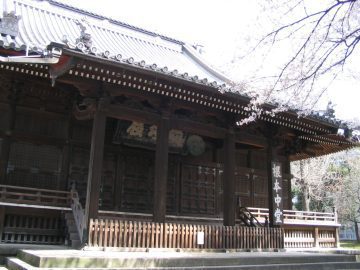
09. The Main Hall of the Kan-eiji Temple
Kan-eiji Temple, 1 chome 14-11, Ueno-sakuragi
The former main hall of this temple that used to stand around the fountain across present Tokyo National Museum was burned down in 1868 in the war in the late Edo Period. The present hall was relocated from Kita-in at Kawagoe City, Saitama Prefecture from 1876 to 1879.
This building is said to be built in 1638. It is 17.4 meters wide and deep. Neither a paint nor coloring is used for the doors and the walls, construction and a design are styles unique to Japanese buildings.
The floor in the room with the Buddhist altar was originally an earthen floor that is a style original with the Tendai sect of Buddhism, now flooring is laid, and it is covered with tatami.
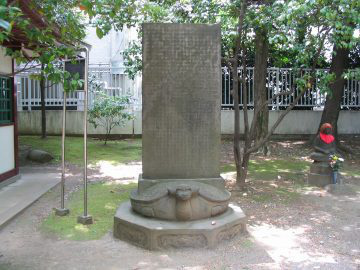
10. The Stone Monument of Priest Ryo-ou Zenji
Metropolitan Historic Site
Kan-eiji Temple, 1 chome 14-11, Ueno-sakuragi

11. The Grave of Priest Jikai
Metropolitan Historic Site
Kan-eiji Temple, 1 chome 14-11, Ueno-sakuragi
The Buddhist priest Jikai was born in Meguro in 1624. Known for his learning and virtue, he spent time in a couple of monasteries before entering Ryoun-in Monastery on Mount Toei (now Ueno Park).
It is said that he died at the age of 70 and his grave was originally in Ryoun-in but in 1958 due to the construction of the Tokyo Metropolitan Festival Hall on the site, his grave was moved to Kan-eiji Temple.
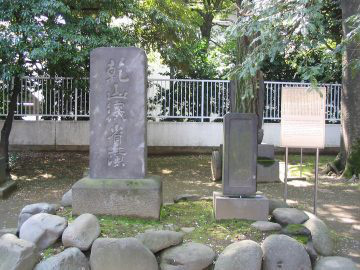
12. Tomb of Ogata Kenzan and Kenzan Shinseiseki
Kan-eiji Temple, 1 chome 14-11, Ueno-sakuragi
Ogata Kenzan is a younger brother of Ogata Korin, painter, and was born in Kyoto in 1663. Kenzan revealed his talent in painting, calligraphy, tea ceremony, etc, but was especially renowned for his ceramic art. He possessed a kiln in Iriya and named his works "Iriya Kenzan".
He died in 1743 at the age of 81 and was buried at Zenyoji Temple in Shitayasakamoto (present address 7-chome 15-ban of Ueno). "Ogata Kenzan Shiseiseki" was built by a man of letters named Sakai Hoitsu. The Shinseiseki was lost when Zenyoji Temple moved, but its copy was erected in 1932 at this site.
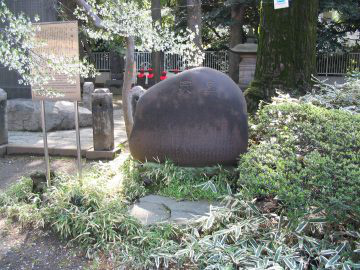
13. Mushizuka-hi [Monument for insects]:materials related to natural history illustrations by Sessai Mashiyama
Metropolitan Historic Site
Kan-eiji Temple, 1 chome 14-11, Ueno-sakuragi
This Mushizuka was built in 1821 for the remembrance of the insects that died and used for sketching by Masiyama Sessai, the head of the Ise Nagashima Clan (present Mie Prefecture). It was built to execute Sessai's will.
He was born in 1754 and learned sketching from Shin Nanpin, a famous Chinese artist in flower and bird painting. A collection of his painting of insects, titled ''Chuuchi-jou" (A drawing block of sketches of insects) is famous.
The monument made of natural stone says "MUSHIZUKA" together with a message engraved.
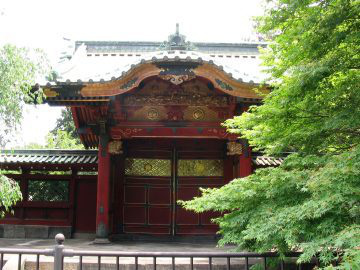
14. Tokugawa Tsunayoshi's Mausoleum Gate Plaque
Important Cultural Properties
Kan-eiji Temple cemetery, 1 chome 16, Ueno-sakuragi
The 5th Shogun Tokugawa Tsunayoshi constructed the Konpon Chudo Hall in Kan-eiji Temple in Takenodai area in September 1698. His mausoleum was completed in November 1709 and was one of the best arranged mausoleums among the other Shogun’s. However, part of the mausoleum was disassembled after the Meiji Restoration or burnt during the World War Ⅱ. The Tsunayoshi’s mausoleum gate plaque directly written by the Emperor of the time (important cultural asset of the nation) was fortunately undamaged by the war and is very valuable.
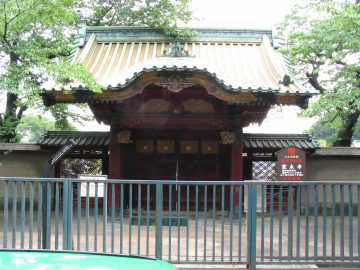
15. Tokugawa Ietsuna's Mausoleum Gate Plaque
Important Cultural Properties
Kan-eiji Temple cemetery, 1 chome 16, Ueno-sakuragi
The 4th Shogun Tokugawa Ietsuna had to sit on the seat of the Shogun when he was merely 10 years old in April 1651, and he died in May 1680 at the age of 39.
Ietsuna often became sick and thus his political affairs were mainly left to the senior statesmen. Especially, Sakai Tadakiyo, the Chief Minister who was in charge of the politics in the last half, is very famous.
Part of Ietsuna's mausoleum was disassembled after the Meiji Restoration or burnt during the second World War, but this Ietsuna's mausoleum gate plaque directly written by the Emperor of the time was fortunately undamaged and still remains as an important cultural asset of the nation.

16. Tombs of the Vassals Who Followed Their Master to the Grave
Genryu-in Temple cemetery, 18, Ueno park
The third Tokugawa shogun Iemitsu died in 1651. After that, five of his vassals committed suicide to follow him; besides, their vassals and family members also killed themselves to follow them. There are tombs of 4 vassals of Iemitsu and tombs of their 8 vassals here.
It is called "Junshi" in Japanese that vassals and family members kill themselves to follow their master to the grave after his death and such people were admired as a loyal person. It was common especially for samurais to commit hara-kiri after their master died in a war. Since numbers of such people increased even in Edo Period, the government prohibited this custom in 1663. Later it almost disappeared.

















